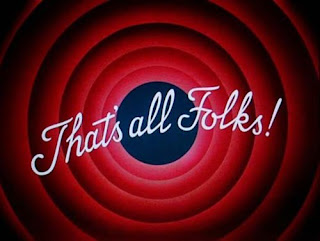
Wednesday 2 June 2010
The Final Post!

Sunday 30 May 2010
A new arrival!
It is especially for Hamish to replace the one he has had for 6 years, previously owned by step-daughter Amba, that is now almost destroyed and often very smelly.
Tuesday 25 May 2010
He's back!
Thursday 20 May 2010
Sunday 16 May 2010
Beautiful wheels!

Yesterday during my fortnightly visit to the old home town, I happened to park opposite a display in the central park, the local vintage vehicle club, had prepared of their beautifully restored cars and motorbikes.


Thursday 13 May 2010
And here for your further pleasure......................
Wednesday 5 May 2010
Looping video on an iPhone
 An artist acquaintance of mine has just emailed me to find out if there is a mobile phone that will loop video for a work she has in mind.
An artist acquaintance of mine has just emailed me to find out if there is a mobile phone that will loop video for a work she has in mind.Many thanks to Scott Link
An alternative to the existing free market economy?
 For sometime now I have been listening to the protests and complaints from many about the way our world works economically. I agree it is not looking very secure but it is all very well complaining but nobody is coming up with an alternative. Not surprising really as a previous effort to Google for an alternative failed! However, today following a breakfast conversation with my beloved, I decided to have another go and bingo I did find an unexpected alternative.
For sometime now I have been listening to the protests and complaints from many about the way our world works economically. I agree it is not looking very secure but it is all very well complaining but nobody is coming up with an alternative. Not surprising really as a previous effort to Google for an alternative failed! However, today following a breakfast conversation with my beloved, I decided to have another go and bingo I did find an unexpected alternative.
- The Islamic economy follows a philosophy which is very different to Capitalism, as a result the end objectives both economies attempt to achieve, widely differ and thus it would be invalid to measure one against the other as they both have different foundations and aims. Islam has detailed laws on the distribution of wealth and this is its ultimate aim with the economy - to ensure wealth circulates around the economy so all can share in the wealth that is generated.
- Because all economic systems aim to address the same issues, there are many peripheral similarities between Islam and the free market. At a doctrinal level however Islam and Capitalism are two distinct systems. The Islamic economic system is fundamentally about people and their needs, this is the fundamental principal the Islamic economy is built around. In a narration from the Prophet Muhammad صلى الله عليه وآله وسلم it was said that: "The son of Adam has no better right than that he would have a house wherein he may live and a piece of cloth whereby he may hide his nakedness and a piece of bread and some water." (Tirmidhi). The Islamic economy is geared towards fulfilling the basic needs of its citizens and these in origin were defined as food, clothing and accommodation. This forms the basis of the Economic system of Islam, all policies and rules are geared towards achieving such ends. Islam focuses on the needs of the people which the hadith outlined and not merely increasing Gross Domestic Product (GDP).
- Islam does not view the human as an economic unit and then look to find the most economically viable solution thus viewing all problems, whether from marriage to pensions to drugs to education, from the angle of the economic effect and cost. Neither does Islam view the human the way the Communists did which is that people are simply matter, just one aspect of nature, nothing more. Islam views the human as being composed of organic needs as well as instincts, all of which requires answers on how to satisfy them. So Islam organised these instincts and needs in a way that ensures the satisfaction of them all, such as the need to eat and the need to reproduce and others. However, this organisation is not arranged in Islam by satisfying some of them at the expense of the others, nor by suppressing some of them, setting others loose, or setting all of them loose. Instead, Islam has co-ordinated the satisfaction of all of them in a way to ensure comfort, preventing conflicts and a lapse to a primitive level through the anarchism of instincts.
- Through its own economic system, Islam laid down rules for the means to acquire wealth and commodities, how they can be utilised and their manner of disposal. It certainly did not make freedom of ownership the basis of the economic system or even the socialist principal of ‘from each according to his ability, to each according to his needs'. It did not define the basic problem as ‘unlimited wants, limited resources'. Islam views the resources to be ample enough to completely satisfy the basic needs of all. Therefore, amongst a host of other detailed rules, one will find the Shari'ah aims to secure the satisfaction of all basic needs (food, clothing and housing) completely for every citizen of the Khilafah State.
- In order to facilitate the acquisition of goods and services Islam put forward rules related to the manner of possessing wealth without any complications. Islam defined the legal means of ownership, and it defined the contracts through which possession can take place. This left humanity free to develop the styles and means by which they earn, as Islam did not interfere in the production of wealth.
- The Islamic economic system has extensive rules for ownership and disposal of citizen's wealth and assets. Beyond this Islam recognises a sphere of the economy as the economic science i.e. through study and research a solution can be derived. Hence how to develop and economy or to industrialise, where the factories and the supply lines should be, how the steel and iron mills should be constructed fall under this category, however what is produced and how it is distributed falls under the ‘system' for which Islam has extensive rules.
- The Islamic economy is based upon wealth generation where participants partake in investment, employment and trade in the real economy. Islam does not have a dual economy where the real economy operates alongside a financial sector. The Islamic economy focuses all participants on the real economy, through employment, company profits, utilisation of land (agriculture) and manufacturing, wealth is generated in only one sector. This brings the huge benefit of wealth only circulating in one sector - the real economy, where all can participate. Derivatives would be withdrawn as this type of contract is not trade in real goods; rather it is betting on the price movements of a commodity and one must posses what they sell in Islam.
- The Islamic system does not recognise the financial markets in their current form. One is able to purchase shares and transfer them without actually partaking in the running of the underlying company that the shares are meant to represent. In Islam ownership is a direct role in a company and not just a share certificate which in effect the stock market allows to be traded and re-traded. It is this ability to not have a direct role in a company that allows excessive speculation.
- The Islamic economic system does not recognise the financial markets in their current form and has made the Western style Public Limited company (joint stock (share)) companies haraam for a number of reasons. Fundamentally this type of contract contradicts the Islamic rules for contracts. The company in the West represents a particular type of contract - the ‘Solitary Will,' this is where an individual agrees to the written constitution of a company by purchasing its shares with no formal offer from anyone. This has come to be termed as the Individual Will whereby shares could be exchanged very quickly without the need for two people to continuously sit down and have a formal offer and acceptance. An example of this is the take-over bid of the world's richest football club, Manchester United FC by Malcolm Glazier in 2005. He imposed his will on the company (i.e. he brought shares) and even though other shareholders were against such an action it was a legal form of acquiring ownership even though there was only one person in the contract. Most contracts involve two parties where one party offers terms and the other accepts, however under corporate law in the West setting up a business is a contract of ‘solitary will.' It is not a contract between two or more people; rather it is an agreement that stipulates that all parties agree to it when they subscribe for shares in the company. So an individual joins himself to the conditions of a company - through purchasing their shares. This means to become a partner one does not need approval from the existing owners - this contradicts Islam.
- Islam's monetary policy is centred around a legal tender based upon the Gold and Silver standard and not one based upon interest rates to regulate inflation and the economy. In Islam when it comes to exchanging a commodity with a specific monetary unit, Islam has guided Muslims to the monetary unit by which the exchange is to take place. It has restricted the Khilafah to a specific type of money, which is gold and silver. The Islamic evidences have designated gold and silver as the primary measuring unit for prices and labour. This is understood from the actions of Muhammad صلى الله عليه وآله وسلم when he collected Zakat, levied taxes and imposed fines, all were measured according to gold and silver. This means the notes and coins circulating in the economy would all be backed by gold and silver. This will no longer make possible the free printing of currency as the Khilafah would need to increase the actual holdings of gold and silver. This has a unique effect on Inflation which free market economies have been unable to contain.
- Islam contains inflation by changing the role of banks. Currently banks practice fractional reserve banking whereby they create credit, borrow money from the financial markets and lend to depositors. This creates a big problem in the economy as very little equity can be used as collateral to borrow large sums of money which creates a bubble waiting to burst. Islam strips the ability of banks to create money and transfers this to the central treasury - Bait ul-mal. Money creation will be the sole role of the state.
- The role of banks in Islam will be to collect the nation's deposits and to also act as a central pool whereby money can be collected and invested in the economy, with the returns being distributed amongst investors. The banks would only be able to invest what they have in deposits and cannot create money as this is the role of the central treasury - bait ul mal. As interest (Riba) is haraam the main function of banks will become the pooling of wealth which can then be invested across the economy aiding wealth distribution and economic growth.
- The Islamic economy is stripped of ‘interest' as this is something Islam has categorically forbidden in the Qur'an. Holding wealth in a bank account will no longer accrue interest and any unused wealth for a year is liable for taxation. In this way such wealth is only productive if invested or spent, and this can only take place in the real economy. The removal of interest in the economy will act as a multiplier affect circulating wealth around the economy.
- Islam does not have a concept of income tax; value added tax, excise duties, nor national insurance contributions. Rather Islam puts the emphasis of taxation on wealth rather than income. Take the average salary in the UK of £24,000. At current tax rates the tax burden alongside National Insurance contributions falls at 33%. This alongside indirect taxation (that is taxation on spending rather than income) as well as council tax, road tax and so forth mean that the real tax burden falls at closer to the 40-50% mark. This means that the average person in UK is losing between £10,000-12,000. So at higher wage levels, the monetary amounts lost towards taxation is much greater.
- In Islam, although simplified, the wealth tax falls at 2.5%. This means that within one year, on average one can save at least £10,000. Therefore two or three people could easily enter into a business contract such as Mudharabah (An Islamic company where one provides the Capital and the second partner works with it) to supply some of the demand in the economy for consumer or manufactured goods thereby creating more employment in the economy. With no concept of interest rates and hoarding forbidden in Islam wealth will circulate quickly ensuring the public can purchase what they specifically need, creating employment and giving all more and more disposable income.
- Islam considers poverty as one matter for humans in any country and in any generation. Poverty in the view of Islam is the non-satisfaction of the basic needs in a complete way. Islam defined these basic needs as three things, which are food, clothing and accommodation. This is seen from the following evidences:
وَعلَى الْمَوْلُودِ لَهُ رِزْقُهُنَّ وَكِسْوَتُهُنَّ بِالْمَعْرُوفِ
"The duty of feeding and clothing nursing of mothers in a seemly manner is upon the father of the child." [Al-Baqarah: 233]
أَسْكِنُوهُنَّ مِنْ حَيْثُ سَكَنتُم مِّن وُجْدِكُمْ وَلَا تُضَارُّوهُنَّ لِتُضَيِّقُوا عَلَيْهِنَّ
"Lodge them where you dwell, according to your wealth." [At-Talaq: 6]
Specifically Islam made the financial support (Nafaqah) compulsory from the revenues of the Bait ul-Mal and from Zakah. From a Macroeconomic perspective the removal of interest, the financial markets and direct taxation allows wealth to freely circulate around the economy so all citizens can partake in the wealth generation process.
- Islam has ordained the state to play a direct role in the economy and does not leave things completely to the market. Islam lays out three types of property; state, public and private. It designated any utility regarded as indispensable for the community, such that its absence would require people to search far and wide for it, as public property. It would then be publicly owned and the revenue generates would be administered for the benefit of all citizens. This is derived from the hadith of the Prophet صلى الله عليه وآله وسلم: "Muslims are partners in three things: in water, pastures and fire." Although the hadith mentioned just three things we can utilise qiyas (analogy) and extend the evidence to cover all instances of indispensable community utilities. Thus water sources, forests of firewood, pastures for livestock and the like are all public utilities as well as the mosques, state schools, hospitals, oil fields, electricity plants, motorways, rivers, seas, lakes, public canals, gulfs, straits, dams etc. Islam would allow ownership if it were not indispensable for the community. This solution will have a unique effect, as it will ensure all will receive the basic requirements to live and not be at the will of monopolies or high prices.
Conclusion
The rejected $700-billion and all subsequent buyout of banks' bad mortgaged-backed securities is not a strategy but mainly a desperate effort to shore up confidence in the system, to prevent the erosion of trust in the banks and other financial institutions and preventing a massive bank run such as the one that triggered the Great Depression of 1929. Having created the conditions that produced history's biggest bubble, America's political leaders appear unable to grasp the magnitude of the dangers they are facing. As the rejection of the original bailout package showed they are mired in their rancorous squabbling among themselves.
What has been very clear from the contradictory moves of allowing Lehman Brothers to collapse while taking over AIG, and engineering Bank of America's takeover of Merrill Lynch - there's no strategy to deal with the crisis, just tactical responses.
Islam offers the Western world its last salvation from descending into complete chaos as the Western world's deposits continue to shrink through further collapses and the last remaining strategy the Western world has left - the printing of more money.
With thanks to khilafah.com
Friday 23 April 2010
Got a bit of time on your hands?
Wednesday 21 April 2010
Sunday 18 April 2010
Monday 12 April 2010
Serenity
Wednesday 7 April 2010
Friday 26 March 2010
The Descent of Inanna!

Intrigued by Michelle's recent excellent post in relation to Inanna the Sumerian heroine, I took the time to investigate this myths appearance in our own world.
Inanna - Queen of Heaven and Earth, sister of Utu, marries Dumuzi - Mezzo
Ereshkigal - Queen of the Netherworld - Mezzo
Geshtinanna - Prophetess and sister of Dumuzi - Soprano
Spinner - The Story Teller - Alto
Dumuzi - Shepherd King , husband of Inanna, brother of Geshtinanna - Tenor
Enki - God of Wisdom - Tenor
Utu - Brother of Inanna - Baritone
Gilgamesh - in service to Inanna - Baritone
Free Voice - an improvising singer - representing the spirit of ancient Iraq.
Chorus Roles - all singers except Inanna
HuluppuTree, Citizens, Laughing Demons, Holy Flies
Saturday 20 March 2010
How to make junk look good!
Thursday 18 March 2010
Australian White Ibis
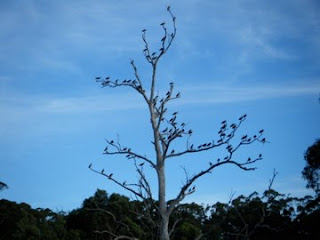 Prior to going to the pub for dinner last night, we took "Those who shall be obeyed" on what is known as "The extra short town walk". Nearing the end of the path we follow we came upon this extraordinary sight - nearly 100 AWIs perched in a large dead tree.
Prior to going to the pub for dinner last night, we took "Those who shall be obeyed" on what is known as "The extra short town walk". Nearing the end of the path we follow we came upon this extraordinary sight - nearly 100 AWIs perched in a large dead tree.Sunday 14 March 2010
New guy on the rubbish truck?
Wednesday 10 March 2010
Today I met Nicky and Cadbury...........
...........and what a privilege it was too!
A new Australian Icon?........
Could be you know!
Saturday 20 February 2010
Friday 19 February 2010
The shoes and socks are gone now but.................
Monday 15 February 2010
Friday 12 February 2010
Homeless!
Monday 1 February 2010
Bad luck Andy M and where are you Rafa!
 He could probably win without his racquet too. I posted this three years ago and I still feel the same way.
He could probably win without his racquet too. I posted this three years ago and I still feel the same way.
Sunday 31 January 2010
Sock Cemetary
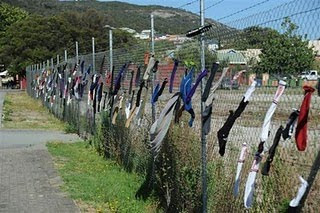 Acknowledging the hard and generally unrecognised contribution that socks make to human life, a concerned group calling themselves Footwear Exhausted Time-honoured In Death, hereon to be referred to as FETID, have founded the Middleton Beach Sock Cemetery utilising the fence surrounding the still abandoned site of the Esplanade Hotel in Albany, Western Australia.
Acknowledging the hard and generally unrecognised contribution that socks make to human life, a concerned group calling themselves Footwear Exhausted Time-honoured In Death, hereon to be referred to as FETID, have founded the Middleton Beach Sock Cemetery utilising the fence surrounding the still abandoned site of the Esplanade Hotel in Albany, Western Australia. Friday 29 January 2010
Wednesday 27 January 2010
Bonsai!
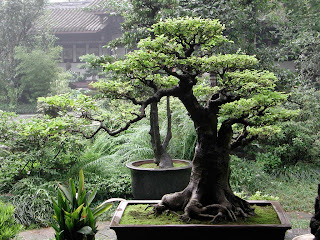

Monday 25 January 2010
Australia Day - Who do we think we are?
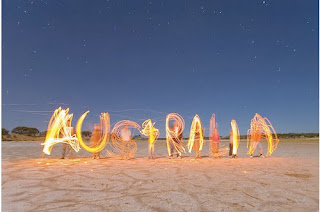 John Faulkner's Opening Address for the Australia Day National Conference in 18 May 2009
John Faulkner's Opening Address for the Australia Day National Conference in 18 May 2009First, let me acknowledge the traditional owners of this land, and pay my respects to their elders past and present.
Let me also acknowledge:
Clarence Slockee and the women who performed the Welcome to Country;
Shelley Reys, the Deputy Chair, of the National Australia Day Council;
Warren Pearson, CEO of the National Australia Day Council;
Bernard Salt and Dr Mark Kristmanson, two of the Conference key speakers; and
The members of the states and territories Australia Day network here today.
Ladies and gentlemen, this first national Australia Day conference is an opportunity to reflect on just how much has changed since the first years of the 19th century when the residents of Sydney began to mark ‘First Landing Day’ with celebratory drinking.
Australia Day has gone through many incarnations.
It is a day, as the National Australia Day Council reminds us, to come together to celebrate what’s great about Australia and being Australian.
But, ladies and gentlemen, what it means to be Australian is a question with many different answers.
We are a young nation in an ancient country.
We prize democracy and the ‘fair go’ but in our history we have excluded many.
We pride ourselves on our inclusiveness but for generations Australia’s first inhabitants were shunted to the margins of our civil society.
We are a nation built and shaped by migration but one where for generations the ‘white Australia’ policy had bipartisan political and public support.
Many of those who made the greatest contributions to the establishment of European settlement arrived in Australia in chains, yet only in recent generations has the ‘convict taint’ ceased to be source of shame.
We are equally proud of our ANZACs and the place they play in our national ethos, and that the military has never suborned our civil and political life.
We are equally proud to be known as sceptical pragmatists and as optimists about the future.
We are knockabout larrikins who average some of the longest working hours in the world.
We believe we are hostile to high achievers yet we take pride in the outstanding Australians whose successes mean we punch above our weight in media, science, arts, diplomacy and many other fields.
In the face of these contradictions, how do we work out just what we celebrate on Australia Day? What does ‘being Australian’ mean?
For more than two hundred years, attempts to find a single definitive answer to that question have drawn lines between Australians. ‘Emancipists’ and ‘exclusives’. ‘Currency lads’ and immigrants. The lonely drovers immortalised in Henry Lawson’s prose and the women’s suffrage activists who read his mother’s – Louisa Lawson’s – feminist journal The Dawn. True-blue ANZACs and ten-pound Poms.
Ladies and gentlemen, in today’s Australia, I believe, we have learnt that there are many different kinds of Australians and many different ways of being Australian.
And since there are so many different ways of being Australian, so many different things to celebrate about Australia, and so many different ways to do so, then Australia Day can, paradoxically, only be a national celebration if it is also a local one. Your communities celebrate Australia Day in their own way. In doing so, they celebrate the values that strengthen our nation, and the diversity which enriches it.
The research report prepared for the National Australia Day Council The Meaning and Impact of Australia Day shows that there are many, many ways to celebrate Australia day – organised and casual, with family, with friends. Wave a flag or swim between the flags. Throw a snag or a tofu kebab on the barbie. Attend a citizenship ceremony, a survival day concert, a beach cricket match, the Darwin Ute run, the Coolum Kite Festival, or listen to the Triple J hottest 100!
To me, that says a great deal about what it means to be Australian. We live in a country where our national day is not a day of prescribed, centrally determined displays of patriotism.
Nor is a day of prescribed types of patriotism.
There are as many reasons to celebrate Australia day as there are ways to do so. Some of the ones highlighted in The Meaning and Impact of Australia Day are:
To celebrate our freedom, our independence and our democracy;
To reflect on the history, and focus on the future, of Australia;
To celebrate people who have made a contribution to the country;
To celebrate our willingness to help others, our acceptance of others, our diversity, and the contribution of migrants to our nation;
To celebrate reconciliation or the relationship between non-indigenous and indigenous Australians and to reflect on the past treatment of indigenous Australians.
Many reasons, many ways – sometimes, many views.
Ladies and gentlemen, there has been controversy, historically, over the celebration of the 26th of January as our national day. For a long time, other colonies and then as they became, other States and Territories, saw the date as a very New South Wales-centric one, rather than a day with applicability to other European settlements around the country.
And the event the 26th of January marks – the arrival of the First Fleet at Sydney Cove – has always been one with more than one meaning.
As early as 1888, when Sir Henry Parkes, then Premier of New South Wales, was asked what centenary celebrations were being planned for Indigenous Australians, he responded “And remind them that we have robbed them?”
The sesquicentenary in 1938 saw the Aborigines' Progressive Association hold a meeting on the ‘day of mourning’ to mark the ‘150th Anniversary of the Whitemen’s seizure of our country’.
The tent embassy in front of parliament house was set up on the evening of Australia Day 1972. The bicentenary celebrations in 1988 also saw events to mark the different meaning of January 26, 1788 for Indigenous Australians. This saw the birth of new traditions, especially the Survival Day Concert.
Ladies and gentlemen, I have no doubt that Australia Day will mean something special, and slightly different, to each of you. Perhaps it is a day to celebrate resilience and survival of Australia’s oldest cultures. Perhaps it is the day you or someone you know became one of Australia’s newest citizens at a citizenship ceremony. For all of us, it is a day on which our personal reasons for taking pride in our country and our community unite us in celebration – celebrations like the ones you co-ordinate.
Everyone involved in the planning and running of Australia Day celebrations deserves a vote of thanks – those of you here today who work so hard to make those celebrations happen, the National Australia Day Council, the volunteers, public servants and committee members around the country who make it a great day for everyone.
The majority of respondents to The Meaning and Impact of Australia Day survey indicated that they believed Australia Day celebrations had an overwhelmingly positive effect on the community: a positive effect on national and community pride, unity, on promoting Australian values, national identity and multiculturalism.
It is clear that Australia Day celebrations have a tremendous positive effect. It is important to enhance those positive effects, and to be aware of and act to diminish the negatives which some respondents expressed concern about.
Forty-nine percent of respondents to the ‘The Meaning and Impact of Australia Day’ survey indicated at least some concern about inappropriate, rowdy and delinquent behaviour at Australia Day celebrations, and nearly a quarter expressed concern over their potential to encourage division.
Ladies and gentlemen, being proud of Australia, and proud to be Australian, is every Australian’s right.
Celebration of our nation and our country should never be used as an alibi for bigotry and discrimination.
It is not the place of any of us to tell other Australians the ‘right way’ to celebrate Australia.
It is certainly not the place of government to tell Australians what being Australian means. Hijacking national identity for electoral benefit is, unfortunately, something some politicians have tried over the years, with varying success. Who can forget Arthur Calwell’s grand, if slightly bewildering, declaration that “We are Labor because we are Australian; and we are Australian because we are Labor”. He was not the first, nor the last, politician to try it, or something like it.
But ladies and gentlemen, the role of the government is not to tell people what being Australian is and means.
It’s about listening to people tell us what being Australian means to them, and providing the space for them to celebrate what they love, and are proud about, in our nation.
The space for all Australians to celebrate what they love, and are proud about, in our nation.
All those who have a leadership role in our society – whether government, the National Australia Day Council, those of you here today who work so hard to bring Australia Day celebrations to your communities – have a responsibility to make celebrating Australia an inclusive rather than exclusive experience, to make sure that all Australians are welcome in the national conversation.
That is a conversation, and a celebration, rarely expressed in the language of lofty abstractions or grandiloquent bombast.
Perhaps this relates to our innate scepticism and irreverence, perhaps to our long history of democratic egalitarianism, perhaps to a pragmatic mindset that deals less in abstract ideals than in concrete solutions. Our Constitution was drafted not by heroic revolutionaries declaring they preferred liberty to death but by pragmatic idealists, crafting a blueprint for a new nation, combining high hopes with low compromises about the size of railway gauges.
Or perhaps it relates to the mismatch between the down-to-earth Australian idiom and the high-flown rhetoric that seem to infest so many declarations of nationalist fervour. Australians are less likely to declare their country the ‘sweet land of liberty’ than to say it’s “Pretty bloody good”.
Ladies and gentlemen, the celebration of Australia Day has gone from strength to strength since the Bicentennial celebrations in 1988 and the shift to establishing the 26th of January as the Australia Day public holiday. And you can take credit for a great deal of that.
In order to continue to thrive, Australia Day and Australia Day celebrations need to evolve with the community – as our Australian community changes – to keep the relevance and the inclusive nature which have served us all so well.
This first Australia Day National Conference is a part of that processes. I know it will provide the opportunity for you to share the ideas and inspirations that you have used as event organisers to make Australia Day a fantastic experience for your communities, as well as to hear from a range of keynote speakers keen to share their experience with you.
I am delighted to open this Conference.
Saturday 16 January 2010
ProChords!
 If you are into composition of any genre then ProChords is sure to be a useful tool for you.
If you are into composition of any genre then ProChords is sure to be a useful tool for you.











